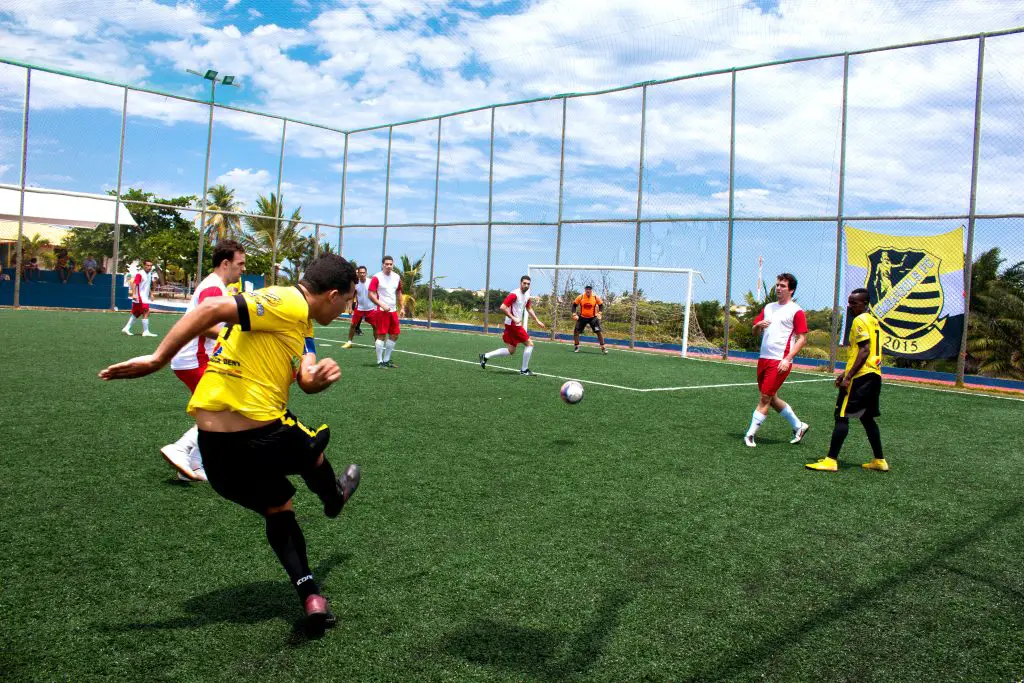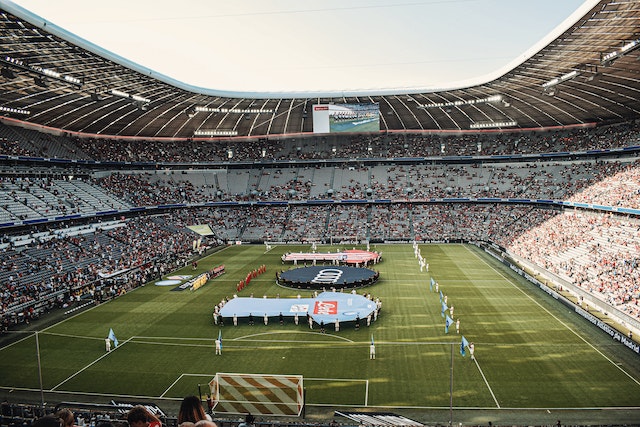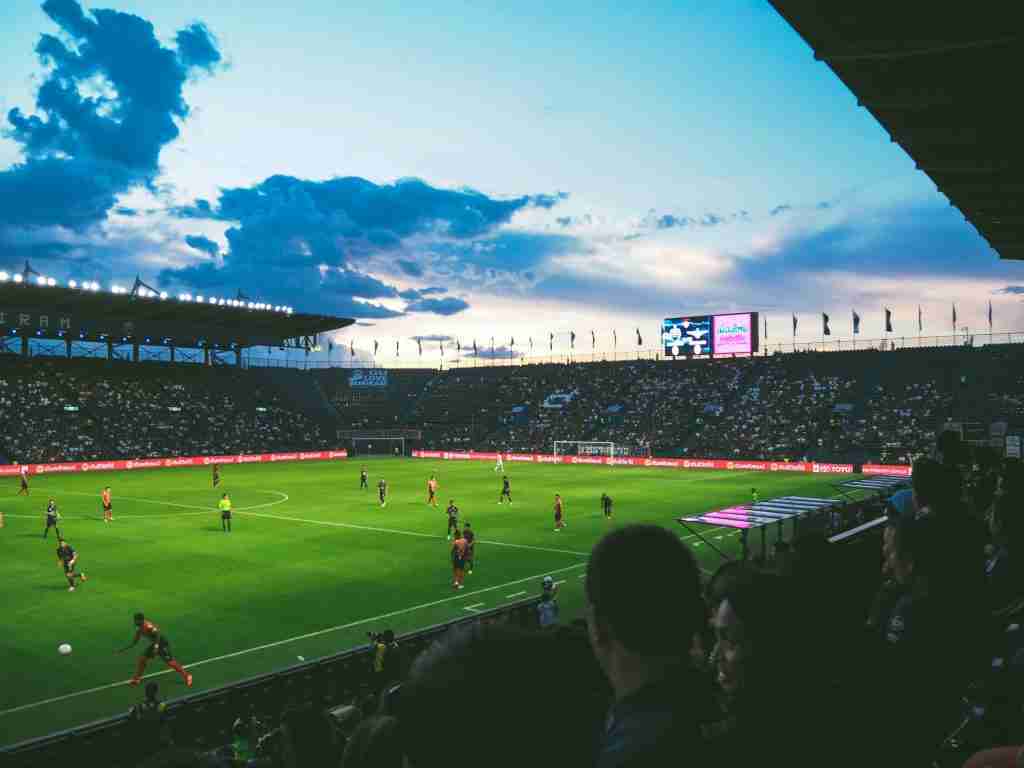So you’re a soccer fanatic, always on the lookout for the latest exhilarating moments from your favorite matches. But have you ever wondered how those captivating video highlights end up on your screen? In this article, we’ll delve into the fascinating world of soccer video highlights regulation.
From licensing agreements to copyright laws, we’ll explore the intricate web of rules and regulations that govern the distribution of these exciting moments in the game.
Strap on your boots and get ready for an insightful journey into the behind-the-scenes of soccer video highlights!
Regulation Bodies
FIFA
FIFA, the Fédération Internationale de Football Association, is the governing body for international soccer. It is responsible for regulating various aspects of the sport, including video highlights. FIFA sets guidelines and rules for the usage of video highlights, ensuring that they are used in a way that benefits the sport and its stakeholders.
UEFA
UEFA, the Union of European Football Associations, is the governing body for soccer in Europe. It plays a crucial role in regulating video highlights within its jurisdiction. UEFA sets standards for the usage of video highlights and ensures that they are distributed and accessed in a fair and equitable manner.
National Football Associations
National Football Associations, such as the English Football Association and the German Football Association, are responsible for regulating soccer within their respective countries. These associations work in collaboration with FIFA and UEFA to establish guidelines and regulations for video highlights. They ensure that the usage of video highlights aligns with the overall goals and values of the sport.
Professional Leagues
Professional soccer leagues, such as the English Premier League and La Liga, also have a say in the regulation of video highlights. These leagues work closely with the national football associations and governing bodies to establish policies and rules regarding the usage of video highlights. They aim to protect the interests of the league, its clubs, and its supporters.

Content Usage Rights
Broadcasting Rights
Broadcasting rights refer to the exclusive rights granted to broadcasters to air and distribute soccer matches and related content, including video highlights. These rights are usually obtained through bidding processes, and the successful broadcasters have the authority to decide how and where the video highlights will be shown.
Licensing Agreements
Licensing agreements are legal contracts between content owners, such as soccer leagues and governing bodies, and third-party platforms. These agreements grant the platforms the right to distribute video highlights. Licensing agreements play a vital role in ensuring that the video highlights are legally and properly utilized.
Fair Use Policies
Fair use policies determine the acceptable and legal use of copyrighted material, including video highlights. They provide a framework for individuals and organizations to use copyrighted content for specific purposes, such as news reporting, criticism, and commentary. Fair use policies balance the rights of content creators with the right of the public to access and share information.
Digital Platforms
Social Media Platforms
Social media platforms, such as Facebook, Twitter, and Instagram, have become increasingly popular for sharing and distributing soccer video highlights. These platforms provide a space for fans and content creators to share videos, commentaries, and reactions. However, the regulation of video highlights on social media platforms is a complex issue due to copyright concerns and the need to protect the interests of content owners.
Streaming Services
streaming services, such as Amazon Prime Video, Netflix, and Hulu, have also entered the realm of soccer video highlights. These platforms offer on-demand access to matches, highlights, and related content. Streaming services must adhere to licensing agreements and broadcasting rights to ensure that they distribute video highlights legally and in accordance with the rights holders’ terms.
Official Websites
Official websites of soccer leagues, teams, and governing bodies are primary sources for authorized video highlights. These websites allow fans to access highlights directly from official sources. The regulation of video highlights on official websites ensures that the content is trustworthy, reliable, and aligned with the rights holders’ interests.

Video Sharing Websites
YouTube
YouTube, the world’s largest video-sharing platform, is widely used for sharing and accessing soccer video highlights. While YouTube provides a platform for fans and content creators to engage with the sport, it also faces challenges in terms of copyright infringement. Measures such as content ID systems and copyright protection tools are used to regulate the unauthorized use of video highlights.
Dailymotion
Dailymotion is another popular video-sharing website that allows users to upload, share, and access soccer video highlights. Dailymotion has implemented copyright protection measures to regulate the usage of video highlights and ensure that they are not used without proper authorization. This helps maintain the integrity of the sport and protects the rights of content owners.
Vimeo
Vimeo is known for its high-quality video hosting services, and it is also used by soccer fans and content creators to share and access video highlights. Similar to YouTube and Dailymotion, Vimeo enforces copyright protection measures to regulate the usage of video highlights. These measures help maintain compliance with licensing agreements and protect the rights of content owners.

Copyright Infringement
DMCA Takedown Notices
Copyright infringement occurs when copyrighted material, including video highlights, is used without permission from the rights holder. To address this issue, the Digital Millennium Copyright Act (DMCA) provides a mechanism for content owners to send takedown notices to platforms hosting infringing content. Platforms must promptly remove the infringing material upon receiving a valid DMCA takedown notice.
Legal Consequences
Engaging in copyright infringement can have significant legal consequences. Content owners have the right to take legal action against individuals or organizations that infringe upon their rights. Legal consequences may include financial penalties, injunctions, or even criminal charges. It is essential for individuals and organizations to respect copyright laws to avoid legal repercussions.
Copyright Protection Measures
To protect their content, rights holders employ various measures to deter copyright infringement. These measures include watermarking, encryption, and technological solutions to detect and prevent the unauthorized use of video highlights. By implementing these protections, content owners can mitigate the risk of copyright infringement and maintain control over their intellectual property.
Official Channels and Partners
Official TV Broadcasters
Official TV broadcasters play a crucial role in the distribution of soccer video highlights. These broadcasters have obtained the exclusive rights to air matches and related content. Through partnerships with leagues and governing bodies, they ensure that fans have access to official highlights through television broadcasts.
Sponsorship and Advertising Partners
Sponsorship and advertising partners contribute to the regulation of soccer video highlights. These partners may have specific rights and agreements related to the usage of video highlights for promotional purposes. Aligning with the overall marketing strategies and partnership agreements, they support the distribution and monetization of video highlights.

Censorship and Geo-blocking
Regional Restrictions
Regional restrictions refer to the practice of limiting access to video highlights based on geographical locations. Rights holders and broadcasters often impose these restrictions to ensure that video highlights are only accessible in specific regions or countries. Regional restrictions help protect the value of broadcasting rights and enable targeted marketing and advertising efforts.
Digital Rights Management
Digital rights management (DRM) refers to technologies and strategies used to control the access, distribution, and usage of digital content. DRM systems are implemented to prevent unauthorized copying, sharing, and modification of video highlights. They play a significant role in regulating the availability and usage of video highlights, enabling rights holders to protect their content and ensure its proper distribution.
Fan-Generated Content
Fan-Recorded Videos
Fans often record videos of soccer matches and share them online, including in-depth highlights. While fan-recorded videos can provide unique perspectives and moments, their usage is subject to regulation. Unauthorized recording and distribution of copyrighted material can infringe upon the rights of content owners. Rights holders and platforms regulate fan-recorded videos to protect their intellectual property and ensure fair use of content.
Fan Commentary
Fan commentary on soccer video highlights is a popular form of fan-generated content. Fans provide their analysis, opinions, and reactions to specific moments or matches.
While fan commentary falls under fair use policies, it is important to avoid copyright infringement and ensure that the commentary adds value and serves educational or critical purposes.
Fan Communities and Blogs
Fan communities and blogs play an important role in the distribution and discussion of soccer video highlights. These platforms facilitate conversations among fans, allowing them to share, analyze, and discuss highlights. While fan communities and blogs contribute to the promotion and engagement of soccer video highlights, it is crucial to operate within the boundaries of fair use policies and respect copyright laws.
Highlights Distribution
Television Broadcasts
Television remains one of the primary platforms for the distribution of soccer video highlights. Official broadcasters air highlights during dedicated match programming or sports news shows. Television broadcasts allow fans to experience the excitement of the game through carefully curated highlights and analysis.
Online Streaming
Online streaming platforms, such as official websites and streaming services, have become increasingly popular for the distribution of soccer video highlights. These platforms offer on-demand access to highlights, allowing fans to watch them at their convenience. Online streaming complements traditional television broadcasts and provides additional options for fans to access highlights.
Social Media Clips
Social media platforms have revolutionized the way soccer video highlights are distributed and consumed. Platforms like Instagram and Twitter allow users to share short clips of highlights, enabling instant and widespread access. Social media clips play an essential role in engaging fans, driving discussions, and promoting the sport.
Fair Use and Commentary
Educational and Critical Commentary
Fair use policies allow for the usage of copyrighted material for educational and critical commentary purposes. Soccer video highlights can be used in educational videos or news reports to provide analysis or illustrate specific points. When used within the boundaries of fair use policies, educational and critical commentary help enhance understanding and foster meaningful discussions.
Parody and Transformative Works
Parodies and transformative works are creative expressions that utilize existing material, such as soccer video highlights, in a humoristic or satirical manner. Parodies aim to provide commentary, criticism, or entertainment, often invoking humor.
Transformative works repurpose video highlights to create something new and unique. As long as these parodies and transformative works meet the criteria of fair use, they contribute to the creative and artistic aspects of soccer video highlights.


